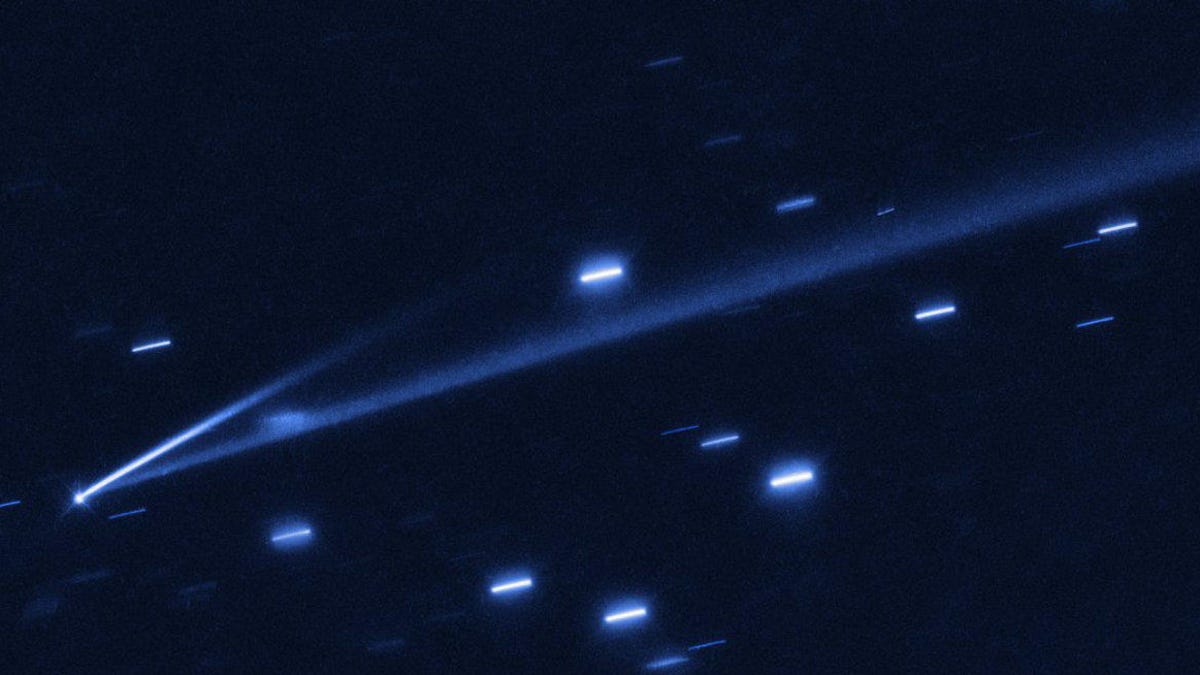Weird asteroid gives scientists 'very big surprise' by changing color
Astronomers see the bizarre space rock go blue. What's more, it sprouted tails.
Asteroid 6478 Gault is an oddball. It sports a comet-like dust trail and, even more weirdly, it changed color from red to blue. "It is the first time scientists have observed a color-shifting asteroid, in real time," the Massachusetts Institute of Technology said in a release on Thursday.
The change wasn't as dramatic to the naked eye as an octopus or chameleon shifting its colors. Astronomers witnessed the asteroid's activity in the near-infrared spectrum, which isn't visible to the human eye.
MIT postdoc Michael Marsset called the shift "a very big surprise," saying, "We think we have witnessed the asteroid losing its reddish dust to space, and we are seeing the asteroid's underlying, fresh blue layers."
The rocky asteroid is located far away between Mars and Jupiter. It has been on astronomers' radars since it was first discovered in 1988, but it didn't stand out from the crowd until recently. Observations from late 2018 and early 2019 showed the space rock was kicking out two dust tails, a rarity for an asteroid.
A closer look at 6478 Gault revealed the asteroid's unexpected color shift. The researchers suspect the asteroid is spinning very quickly and shedding its old surface dust to reveal fresh material below. Kind of like a space snake ditching its skin.
The MIT-led research team published its findings in Astrophysical Journal Letters on Friday.
Asteroid 6478 Gault may not be long for this universe. NASA said those tails could be "key evidence that Gault is beginning to come apart." If it does end up disintegrating, then at least it will have gone out in spectacular style.
Originally published Aug. 30, 2:17 p.m. PT.


